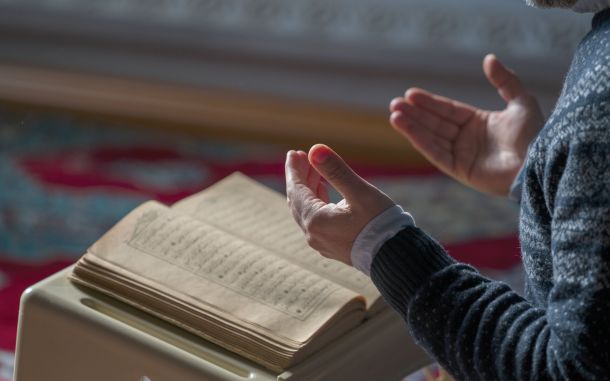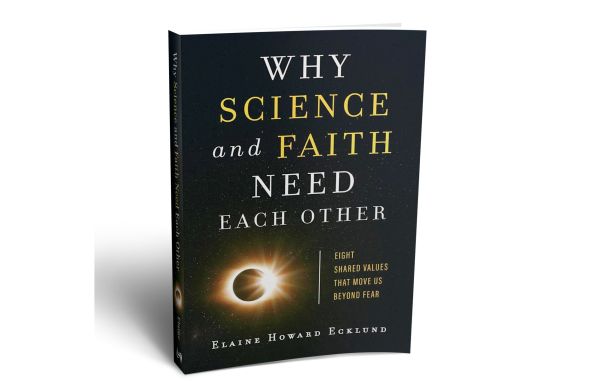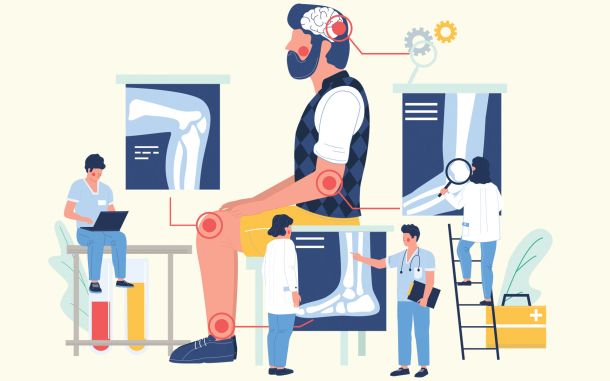What Happens After Death?

In This Article
-
New scientific research on what happens after biological death shows striking results.
-
Near-death experiences that many people had included strong emotions, like a sense of overwhelming peace and well-being, an experience of unconditional love, a sense of being outside the physical body.
-
Results of many studies show that people who have gone through clinical death through cardiac arrest for ever-extended periods of time, there are clear cases where people’s consciousness has continued, but the brain has flatlined.
In November 2022, New York University announced startling research led by researchers at Grossman School of Medicine and elsewhere. Some 25 hospitals in the United States and the United Kingdom participated in the study which involved 567 men and women whose hearts stopped beating while hospitalized and underwent cardiopulmonary resuscitation (CPR). Despite immediate treatment, only 53 people recovered sufficiently to be discharged from the hospital. Six of the 28 participants interviewed remembered unusual experiences. The press release states: “Survivors reported having unique lucid experiences, including a perception of separation from the body, observing events without pain or distress, and a meaningful evaluation of life, including of their actions, intentions, and thoughts toward others. The researchers found these experiences of death to be different from hallucinations, delusions, illusions, dreams, or CPR-induced consciousness.”
Sam Parnia, the lead study investigator and an intensive care physician, who is also an associate professor in the Department of Medicine at NYU Langone Health, has been researching people who have come back to life after their heart, respiration, and brain activities have stopped. Dr. Parnia presented the study findings at a resuscitation science symposium which was a part of the American Heart Association’s Scientific Sessions 2022. In his speech, he mentioned patients who stated that they had a very clear evaluation of life and gave some examples. One of them said: “I was given a life review. During the review, we revisit scenes from our lives.” Another person said, “I saw my entire life in great detail and experienced feelings through it of satisfaction, shame, repentance.” And another one said: “I then saw things in rapid succession that were moments of my life.”
In a press release from NYU Langone Health in April 2022, it was stated that for decades, people who have survived an encounter with death have recalled unexplained lucid episodes involving heightened consciousness and awareness. These have been reported using the popular—yet scientifically ill-defined—term “near-death experiences.” According to the press release, a research team led by Dr. Sam Parnia examined the accumulated scientific evidence to date and published the research results in the Annals of the New York Academy of Sciences. The researchers in the study represent many medical disciplines and represent many of the world’s most respected academic institutions. According to the study, thanks to advances in resuscitation and critical care medicine, many people have survived encounters with death or being near death. These people have consistently described recalled experiences surrounding death, which involve a unique set of mental recollections with universal themes; they follow a specific narrative arc involving a perception of (a) separation from the body with a heightened, vast sense of consciousness and recognition of death; (b) travel to a destination; (c) a meaningful and purposeful review of life, involving a critical analysis of all actions, intentions and thoughts towards others; a perception of (d) being in a place that feels like “home”, and (e) a return back to life. “We took hundreds of people’s experiences and merged them together so that we could pull out clusters of experiences, and come up with a common definition” Parnia told The Telegraph. According to the article in The Telegraph, many people remember leaving their bodies. Some report being able to see in all directions, or hovering in space, sometimes connected to their own body by a cord. Others recall being drawn through a tunnel or seeing their entire life in review, including how their actions impacted others.
Dr. Sam Parnia gave an example of the cases they've been studying in his speech at the New York Academy of Sciences Symposium in 2019: “… then I began a review of my life, the key moments of my life. But at the same time, I was reexperiencing it from other people's points of view. And that was a stunt because you feel that pain, you feel the sting, you feel the hurt. So what I saw was my own lies and my own self-deception to myself, which I had used to convince myself that doing certain things was okay. Because people had deserved that. I was not experiencing the emotional impact it had on other people. I felt their pain. I felt the shock.”
Dr. Parnia talked about the brain and consciousness at the TV show “Closer to Truth” in 2021. He said: “… So the heart stops, the person stops breathing immediately because no blood is flowing. There's no oxygen delivered to the body. The brain shuts down within seconds, and it flatlines completely. … And we used to think that brain cells, neurons only had like five or 10 minutes before they became irreversibly damaged and we realized that's not true. … However, today, we've managed to discover ways to essentially manipulate those processes by which cells are dying in a person who has just died. And we start the heart thus bring the person back to life. Not just minutes, but hours after they've died. … We cannot deny that human beings are conscious thinking entities and that essentially, we don't want to bring back a husk, a shell. We want to bring back a whole person with full consciousness, the mind, the psyche, the soul of the person with them. And so we study consciousness after the period of death after someone's gone through cardiac arrest. And what we're beginning to demonstrate is that actually contrary to our perceptions, consciousness does not become annihilated, just because a person has just died. … When you examine the results of studies in people who have gone through clinical death through cardiac arrest for these ever-extended periods of time, we see that there are clear cases where people’s consciousness has continued, but the brain has flatlined.”
The results of a large-scale study sponsored by the University of Southampton were published in 2014 in the journal Resuscitation. The study involved patients from 15 hospitals in England, America and Austria. 2060 people had cardiac arrest during the study. Of the 330 survivors, some of them could not be interviewed for reasons such as being very ill and of the 140 patients interviewed, 55 reported perceptions of awareness. (Although no patient demonstrated clinical signs of consciousness during CPR.) Scientists included the patients' descriptions of their experiences in the Resuscitation article. One of them said: “I have come back from the other side of life... God sent (me) back, it was not (my) time—(I) had many things to do... (I traveled) through a tunnel toward a very strong light, which didn’t dazzle or hurt (my) eyes... there were other people in the tunnel whom (I) did not recognize. When (I) emerged… (He described a very beautiful crystal city)... there was a river that ran through the middle of the city (with) the most crystal clear waters…” A 57 year old man described the perception of observing events from the top corner of the room and continued to experience a sensation of looking down from above. According to the article he accurately described people, sounds, and activities from his resuscitation and his medical records corroborated his accounts and specifically supported his descriptions and the use of an automated external defibrillator.
Cardiologist Dr. Pim Van Lommel and colleagues also published startling research in The Lancet, one of the most prestigious medical journals. The study included 344 cardiac patients who were successfully resuscitated after cardiac arrest in ten Dutch hospitals. The research team found 62 patients had experiences such as out of body experience, moving through a tunnel and meeting with deceased persons. During the pilot phase in one of the hospitals, a coronary-care-unit nurse reported a veridical out-of-body experience of a resuscitated patient. She said, during a night shift an ambulance brought in a 44-year-old cyanotic, comatose man into the coronary care unit. After admission, he received artificial respiration without intubation, while heart massage and defibrillation are also applied. When they wanted to intubate the patient, he turns out to have dentures in his mouth. The nurse removes these upper dentures and puts them onto the 'crash car.' Meanwhile, they continue extensive CPR. After about an hour and a half, the patient had sufficient heart rhythm and blood pressure, but he is still ventilated and intubated, and he is still comatose. He was transferred to the intensive care unit. After more than a week, she meets him again and distributes his medication. The nurse described the incident: “The moment he sees me he says: 'Oh, that nurse knows where my dentures are.' I am very surprised. Then he elucidates: 'Yes, you were there when I was brought into hospital and you took my dentures out of my mouth and put them onto that car, it had all these bottles on it and there was this sliding drawer underneath and there you put my teeth.' I was especially amazed because I remembered this happening while the man was in deep coma and in the process of CPR. When I asked further, it appeared the man had seen himself lying in bed, that he had perceived from above how nurses and doctors had been busy with CPR. He was also able to describe correctly and in detail the small room in which he had been resuscitated as well as the appearance of those present like myself. At the time that he observed the situation he had been very much afraid that we would stop CPR and that he would die. And it is true that we had been very negative about the patient's prognosis due to his very poor medical condition when admitted. The patient tells me that he desperately and unsuccessfully tried to make it clear to us that he was still alive and that we should continue CPR. He is deeply impressed by his experience and says he is no longer afraid of death. 4 weeks later he left the hospital as a healthy man."
Bruce Greyson, emeritus of psychiatry and neurobehavioral sciences at the University of Virginia, is one of the world's leading authorities on near-death experience research. Greyson interviewed many people who have had these experiences throughout his career. He recently appeared on NPR and said the near-death experiences that many people had included strong emotions, like a sense of overwhelming peace and well-being, an experience of unconditional love, a sense of being outside the physical body. In his speech on NPR Greyson said: “I've got story after story of people who couldn't go back to the same profession, people who were, say, career police officers who couldn't shoot after a near-death experience, of people who were in competitive businesses who no longer felt it was meaningful to get ahead at someone else's expense. And they had to change their careers. They often go into helping careers – you know, health care, teaching, social work, clergy, that sort of thing.” And he also said: “After 50 years of studying thousands of cases, I can't deny that they happen and that they profoundly affect people's lives and present us with things that we don't have materialistic explanations for.”
Three cases
On the NPR show, Greyson gave an example from his book "After" which was published in 2021: He met a 25-year-old man named Jack, who kept having respiratory arrests and had to be resuscitated. Greyson said: “And his primary nurse, who worked with him every day, told him once that she was going to be leaving for the weekend, and some of the nurses would be substituting for her. So she left. And while she was away on the weekend, he had another respiratory arrest where he had to be resuscitated. And he found himself in a beautiful pastoral scene. And there, to his surprise this nurse, Anita comes walking towards him. And he does a double take and says, you know, Anita, what are you doing here? And she said you can't stay here Jack. You need to go back to your body. And I want you to find my parents and tell them that I love them and I'm sorry I wrecked the red MGB. And then she turned and walked away. He then woke up back in his body in the hospital with a complete memory of this vivid experience and tried to tell this to the next nurse who walked into his room. And she quickly exited the room in tears. It turned out that his primary nurse, Anita, had taken the weekend off to celebrate her 21st birthday, and her parents surprised her with the gift of a red MGB. And she got excited, jumped in the car, took off for a test drive, lost control and crashed the car, dying instantly, just a few hours before he had his near-death experience.”
Penny Sartori, who worked as an intensive care nurse in England for 17 years, has a doctorate on near-death experiences and has written four books. Sartori describes one of the cases in her article published in the Daily Mail in 2014: “Take, for instance, the case of Fred Williams, a Swansea pensioner in his 70s who was suffering from the final stages of a terminal heart problem. One night in the hospital, he lost consciousness and we feared he was about to die. But he somehow managed to keep his faltering grip on life. And when he eventually came to (himself), I noticed at once that he looked very happy. My colleagues also remarked on this. By the following morning, Fred had recovered sufficiently to see his anxious relatives. To their astonishment, he told them that he’d been visited—while unconscious—by his mother and grandmother, both of whom were dead, as well as by his (living) sister. They’d just stood by his bedside, keeping vigil. ‘I couldn’t understand why my sister was there as well,’ he remarked. Unknown to him, his sister had actually died the week before. Fearing the news might jeopardize his recovery, his family had kept it from him. Poor Fred never learned the truth, and died a week later.”
Atif Khalil, an Associate Professor of Religious Studies at the University of Lethbridge in Canada, mentions an account shared through personal correspondence in his article published in Renovatio, the journal of Zaytuna College based in California: “A South African Muslim father recounted the NDE of his son, a drug addict who tried unsuccessfully to commit suicide, in which he met the family’s deceased Chishti Sufi shaykh, relatives who had died, as well as the Prophet Muĥammad (peace be upon him)—all of whom instructed him to return (to his life) to care for his child. The father’s conviction in the veridical nature of the son’s experience rested partly on the fact that, to the astonishment of his physicians, he not only made a virtually impossible recovery, eventually reforming his life, but also accurately described family members he had never met before.”
In an article published in 2014, Dr. Bruce Greyson and Nancy Evans Bush, President Emerita of the International Association for Near-Death Studies, wrote: “The great majority of near-death experiences (NDEs) reported publicly over the past four decades have been described as pleasant, even glorious. Almost unnoticed in the euphoria about them has been the sobering fact that not all NDEs are so affirming. Some are deeply disturbing.” They say a classic response to profound spiritual experience is conversion, not necessarily changing one’s religion but in the original sense of the Latin convertere meaning “to turn around.” And that the terrifying NDE is interpreted as a warning about unwise or wrong behaviors, and to turn one’s life around.
References
- https://nyulangone.org/news/lucid-dying-patients-recall-death-experiences-during-cpr
- https://www.youtube.com/watch?v=XkgLBCATUgA
- https://nyulangone.org/news/recalled-experiences-surrounding-death-more-hallucinations
- https://nyaspubs.onlinelibrary.wiley.com/doi/10.1111/nyas.14740
- https://www.telegraph.co.uk/news/2022/05/07/near-death-experiences-will-studied-seriously-number-people/
- https://www.nyas.org/events/2019/what-happens-when-we-die-insights-from-resuscitation-science/
- https://www.youtube.com/watch?v=j-Boi6rzQms
- https://www.resuscitationjournal.com/article/S0300-9572%2814%2900739-4/fulltext
- https://www.acessoaoinsight.net/arquivo_textos_theravada/eqm.pdf
- https://www.npr.org/2022/07/14/1111473823/one-man-recounts-his-near-death-covid-story
- https://www.npr.org/transcripts/1111686005
- http://www.drpennysartori.com/media.html
- https://renovatio.zaytuna.edu/article/science-religion-and-the-challenge-of-near-death-experiences
- https://www.ncbi.nlm.nih.gov/pmc/articles/PMC6173534/









